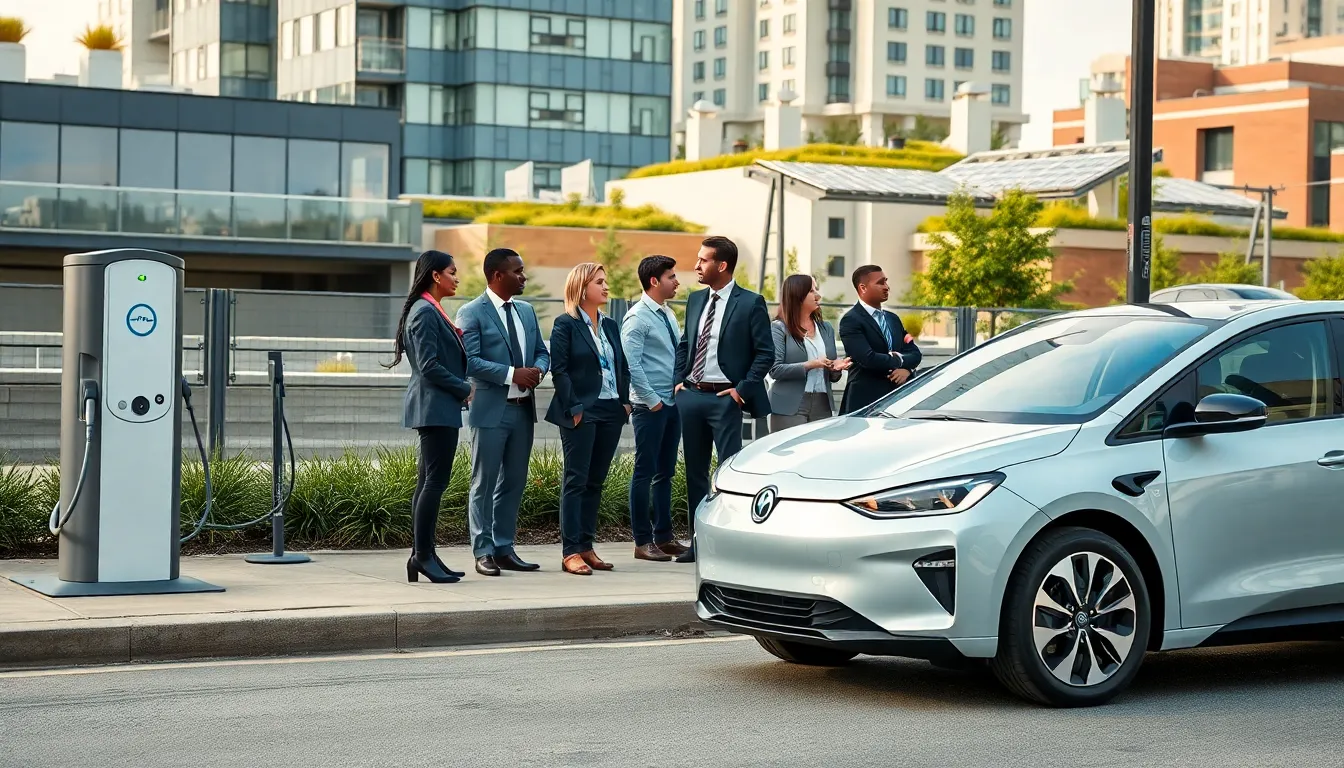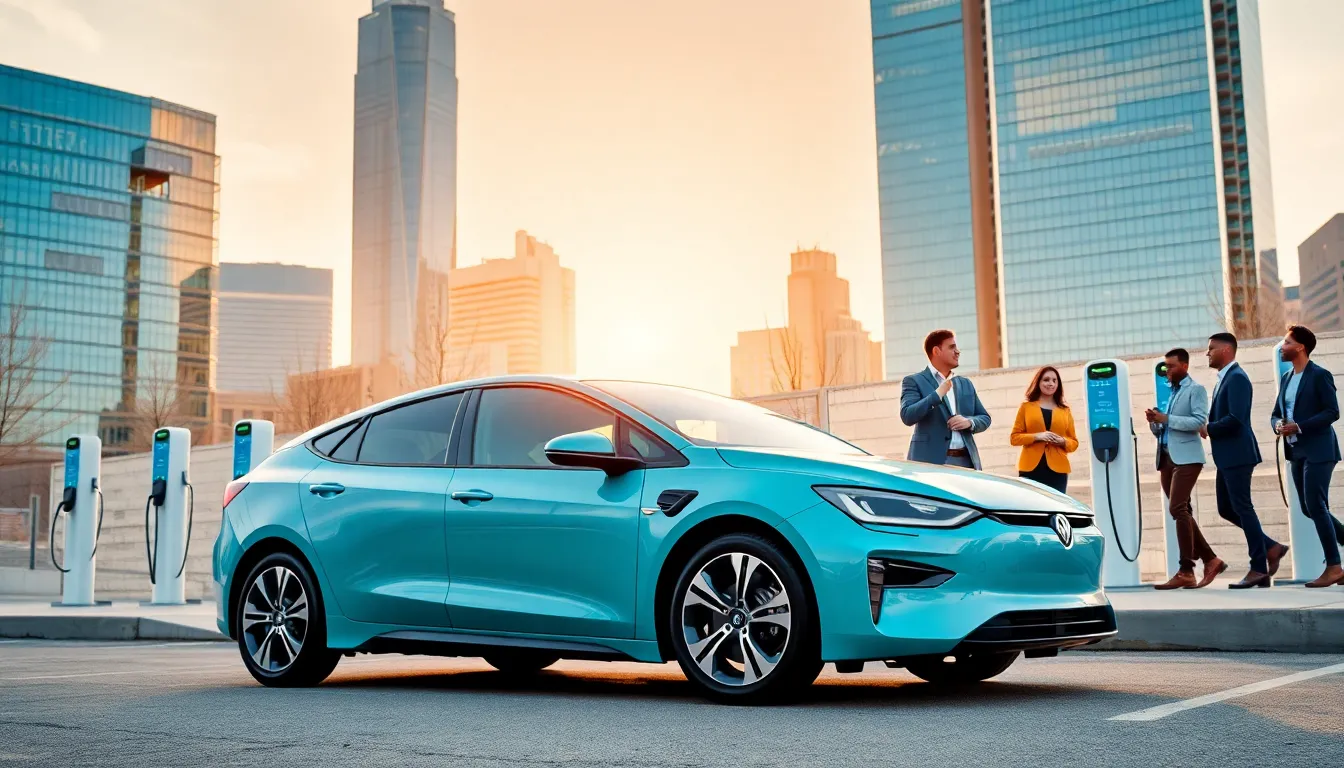Table of Contents
ToggleWhen it comes to electric vehicles, few figures stand out quite like Pete Buttigieg. With his sights set on revolutionizing American transportation, he champions a future where electric cars are not only the norm but also an accessible option for every driver. Buckle up as we jump into how Buttigieg’s vision is steering the electric vehicle (EV) industry into high gear, strapping in might just save you some serious cash at the pump, too.
The Vision for Electric Vehicles Under Buttigieg

Buttigieg’s vision for electric vehicles is nothing short of ambitious. He envisions a future where every American proposes their own electric vehicle journey. This isn’t just about sleek designs or battery power: it’s about reshaping how Americans think about travel. Buttigieg believes in the importance of integrating electric vehicles into the broader context of environmental sustainability and economic growth.
The aim is clear: to reduce the nation’s carbon footprint while simultaneously creating jobs in the burgeoning green economy. His commitment to sustainability means that he plans to advocate for policies that favor the adoption of EVs. With thoughtful strategies, his administration aims to make electric vehicles not just a trendy choice but a mainstream one.
Federal Initiatives and Funding
Federal initiatives act as the wind in the sails of Buttigieg’s electric vehicle vision. The Biden administration has focused on a robust national approach to facilitating EV adoption. Funding plays a crucial role in this landscape: Buttigieg’s team has been instrumental in securing multi-billion-dollar investments towards EV resources.
One significant initiative includes increasing federal EV charging stations, designed to dispel range anxiety and ensure that all Americans can access electric vehicle infrastructure. Also, there’s a push for collaborative partnerships with state governments and private sectors to enhance these funding opportunities. These efforts showcase how the federal commitment goes beyond mere discussions and focuses on tangible actions to boost the EV marketplace.
Infrastructure Development and Investment
Infrastructure becomes the backbone of any successful electrification effort, and Buttigieg recognizes this truth wholeheartedly. Development plans involve a comprehensive network of charging stations strategically located throughout urban areas, highways, and rural landscapes. Imagine traveling across the United States not fretting over where to recharge your electric vehicle: this is the ultimate goal.
Investment in infrastructure includes significant federal funding earmarked for building fast-charging networks across regions that currently lack sufficient resources. Besides, the commitment to enhancing public transport systems with electric options underscores a broader vision of sustainability. Building this framework signals that electric vehicles aren’t relegated to the rich or tech-savvy: they’ll soon be available for all.
The Role of Automakers in the Transition
Automakers are pivotal players in the transition to electric vehicles, and they have taken notice of Buttigieg’s push for electrification. Major car manufacturers are ramping up their efforts to develop and release electric vehicle models that appeal to different segments of the market. From Uber’s electrification initiative to Ford’s commitment to invest billions in EV production, the industry’s response is electrifying.
Buttigieg’s encouragement of innovation within the automotive sector highlights a collaborative future. Companies are innovating battery technologies and sustainability practices to keep pace with regulatory changes and market demands. This paradigm shift isn’t merely about manufacturing: it’s about reimagining what vehicles can do. The increased competition among automakers drives down costs, making electric vehicles more affordable for consumers.
Consumer Incentives and Public Adoption
Consumer incentives play a significant role in the uptake of electric vehicles, and Buttigieg’s policies aim to sweeten the deal. Federal tax credits for EV purchases, rebates, and grants are designed to entice potential car buyers looking for greener alternatives. By lowering the entry price for consumers, the intention is to create an accessible pathway for families to opt for electric vehicles.
Also, educational campaigns, emphasizing the long-term savings associated with EVs, are essential to overcoming skepticism. Testimonials from early adopters can also provide valuable insights for potential buyers. When shoppers realize that switching to an electric vehicle can mean a reduction in fuel and maintenance costs, the transition appears significantly more appealing.
Challenges Facing Electric Vehicle Adoption
Even though the rosy outlook, numerous challenges still loom over electric vehicle adoption. A major hurdle remains the varying infrastructure across states: not every area is equipped with adequate charging stations, leading to disparities in EV accessibility. Also, battery production and the sourcing of materials like lithium pose significant environmental and ethical considerations.
Public perception also presents challenges. Some consumers remain hesitant about the range of electric vehicles, worried that they may not perform as well as traditional gasoline vehicles. Buttigieg’s team recognizes these concerns and advocates for solutions that address these shortcomings while fostering public trust through transparency and data-driven evidence.
Future Outlook for Electric Vehicles in America
The future of electric vehicles in America appears brighter than ever and it receives a nudge from Buttigieg’s continuous advocacy. As technology advances and battery performance improves, expectations of what electric vehicles can offer evolve rapidly. Imagine a landscape where EVs dominate the roads, accompanied by a buzzing network of sustainable infrastructure.
Such a future could include self-driving electric vehicles, completely integrated public transport systems, and even electrified freight solutions. The continued alignment of policies and incentives will heavily influence this trajectory. With ongoing support from both government and private sectors, the growth of the electric vehicle market seems promising.







